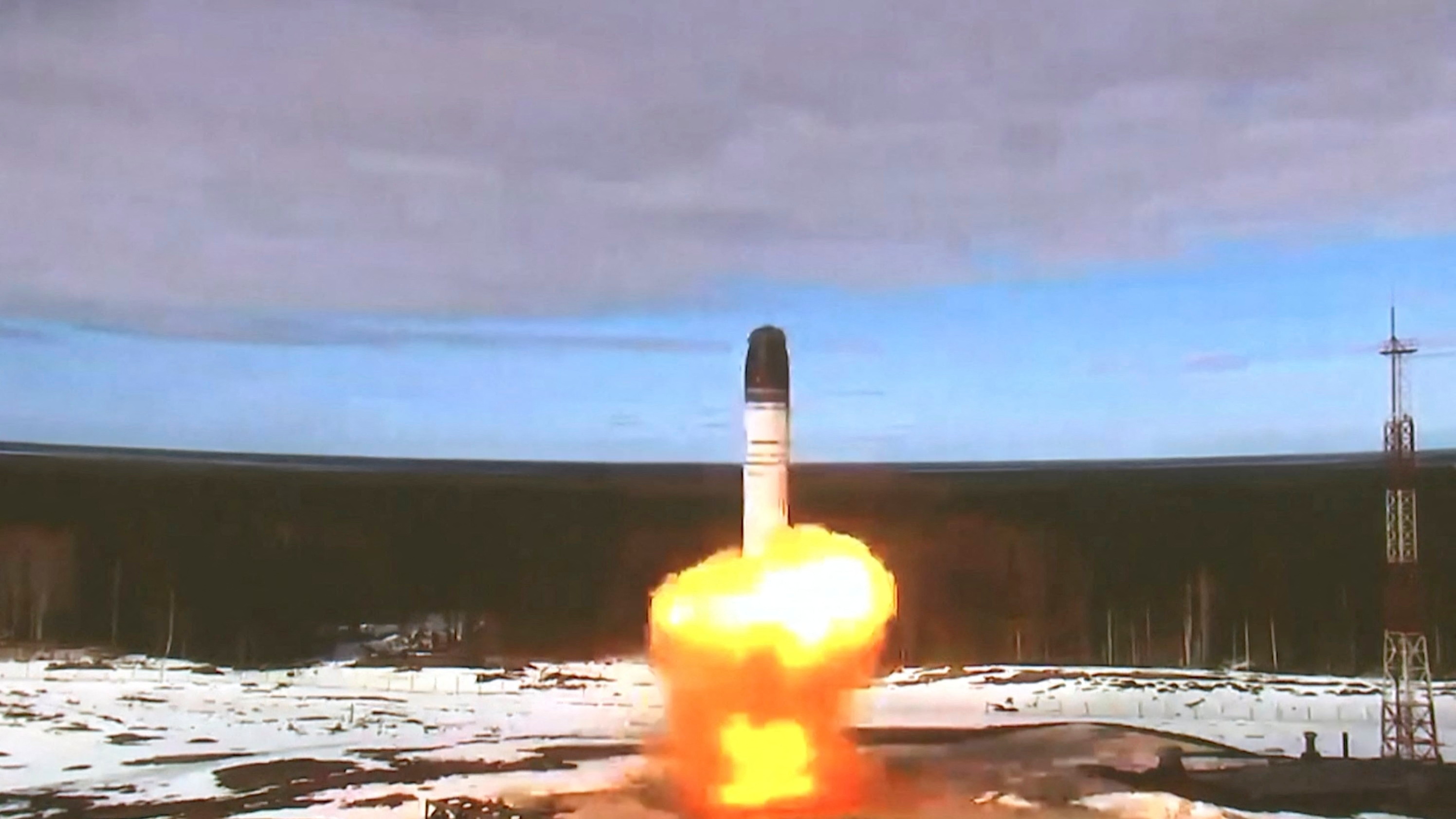- https://www.reuters.com/world/europe/russia-tests-new-intercontinental-ballistic-missile-2022-04-20/
3 minute read

The Sarmat intercontinental ballistic missile is launched during a test at Plesetsk cosmodrome in Arkhangelsk region, Russia, in this still image taken from a video released on April 20, 2022. Russian Defence Ministry/via REUTERS
Register now for FREE unlimited access to Reuters.com
Register
- Summary
- Sarmat launch comes at moment of extreme tension over Ukraine
- Putin boasts it can evade missile defences
- Test follows years of design and funding delays
LONDON, April 20 (Reuters) – Russia said on Wednesday it had conducted a first test launch of its Sarmat intercontinental ballistic missile, a new and long-awaited addition to its nuclear arsenal which President Vladimir Putin said would make Moscow’s enemies stop and think.
Putin was shown on television being told by the military that the missile had been launched from Plesetsk in the country’s northwest and hit targets in the Kamchatka peninsula in the far east.
The Sarmat has been under development for years and so its test-launch is not a surprise for the West, but it comes at a moment of extreme geopolitical tension over the war in Ukraine.
“The new complex has the highest tactical and technical characteristics and is capable of overcoming all modern means of anti-missile defence. It has no analogues in the world and won’t have for a long time to come,” Putin said.
“This truly unique weapon will strengthen the combat potential of our armed forces, reliably ensure Russia’s security from external threats and provide food for thought for those who, in the heat of frenzied aggressive rhetoric, try to threaten our country.”
Douglas Barrie, senior fellow for military aerospace at the International Institute for Strategic Studies, said the launch was an important milestone after years of delays caused by funding issues and design challenges.Report ad
He said more tests would be needed before Russia could actually deploy it in place of ageing SS-18 and SS-19 missiles that were “well past their sell-by date”.
Barrie said the Sarmat’s ability to carry 10 or more warheads and decoys, and Russia’s option of firing it over either of the Earth’s poles, posed a challenge to ground and satellite-based radar and tracking systems – “this complicates where you’ve got to look”.
SYMBOLIC TIMING
Jack Watling of the RUSI think-tank in London said there was an element of posturing and symbolism involved, eight weeks into the war in Ukraine and less than three weeks before the annual Victory Day parade where Russia shows off its latest weapons.
“The timing of the test reflects the Russians wanting to have something to show as a technological achievement in the lead-up to Victory Day, at a time when a lot of their technology has not delivered the results they would have liked in Ukraine,” he said.
Launching the invasion on Feb. 24, Putin made a pointed reference to Russia’s nuclear forces and warned the West that any attempt to get in its way “will lead you to such consequences that you have never encountered in your history.”
Days later, he ordered Russia’s nuclear forces to be put on high alert. “The prospect of nuclear conflict, once unthinkable, is now back within the realm of possibility,” United Nations Secretary-General Antonio Guterres said last month.
Russia’s defence ministry said the Sarmat was fired from a silo launcher at 1512 Moscow time (1212 GMT) and the training warheads reached a test range on Kamchatka, nearly 6,000 km (3,700 miles) away in the Pacific.
Igor Korotchenko, editor in chief of Russia’s National Defence magazine, told RIA news agency it was a signal to the West that Moscow was capable of meting out “crushing retribution that will put an end to the history of any country that has encroached on the security of Russia and its people”.
